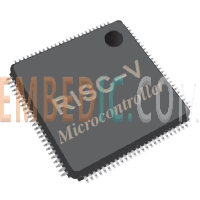RISC-V is an open-source instruction set architecture used to develop customized processors for applications ranging from embedded designs to supercomputers.
Unlike proprietary processor architectures, RISC-V is an open-source instruction set architecture (ISA) for developing customized processors for a wide range of end-use applications.Originally developed at the University of California, Berkeley, the RISC-V ISA is considered a fifth-generation processor built on the concept of a reduced instruction set computer (RISC). It has become very popular in recent years due to its openness and technical merits. The standard is currently managed by RISC-V International, an organization with more than 3,000 members, and it is reported that more than 10 billion chips containing RISC-V cores have been shipped by the end of 2022.Many implementations of RISC-V are available, including open source cores and commercial IP products.
Overall, RISC-V's popularity stems from its openness, flexibility, adaptability, and collaborative community efforts. These factors make RISC-V a viable and attractive alternative to proprietary instruction set architectures for a variety of applications and industries.
A RISC-V microcontroller is a type of microcontroller that utilizes the RISC-V instruction set architecture (ISA). RISC-V stands for "Reduced Instruction Set Computer - V" and is an open-source ISA that has gained popularity for its flexibility and adaptability in various computing applications, including microcontrollers.

Here are some key points about RISC-V microcontrollers:
SiFive:
SiFive FE310: The SiFive FE310 is one of the early RISC-V microcontrollers and is based on the E31 RISC-V core. It was commonly used for educational and development purposes.
Microchip Technology:
PolarFire SoC: Microchip's PolarFire SoC combines a RISC-V CPU with FPGA fabric, offering a wide range of customization options.
GigaDevice:
GD32VF103: GigaDevice's GD32VF103 series features RISC-V cores and is compatible with the popular STM32 microcontroller family.
Western Digital:
SweRV Core EH1: Western Digital released its SweRV Core EH1 as an open-source RISC-V core, which can be integrated into custom microcontroller designs.
GreenWaves Technologies:
GAP8: GreenWaves Technologies' GAP8 is designed for low-power AI and IoT applications, featuring multiple RISC-V cores optimized for edge computing.
Andes Technology:
AndesCore N25F: Andes Technology offers RISC-V cores that can be used in various microcontroller applications. The N25F is an example of one of their cores.
OpenISA/Open-V
Open-V: Open-V is an open-source RISC-V microcontroller project that provides a customizable and affordable RISC-V-based microcontroller platform.
Seeed Studio:
Seeed Studio's Sipeed MAIX series: These are RISC-V-based AI-focused microcontroller development boards designed for machine learning and computer vision tasks.
Nuclei System Technology:
Nuclei N100 and N200 series: Nuclei System Technology offers a range of RISC-V-based microcontroller cores suitable for IoT and embedded applications.
GreenSocs:
Shakti Processor Family: GreenSocs' Shakti processor family includes a range of RISC-V cores designed for various applications, including microcontrollers.
The application options for RISC-V ISAs are endless:
Wearables, Industrial, IoT and Home Appliances.RISC-V processors are ideally suited to meet the power requirements of space-constrained and battery-powered designs.
Smartphones. RISC-V cores can be customized to handle the performance required to power a smartphone, or can be used as part of a larger SoC to handle tasks specific to the operation of the phone.
Automotive, high-performance computing (HPC) and data centers. RISC-V cores can be customized to handle complex computational tasks with custom ISAs, while RISC-V extensions can be developed to be simple, secure and flexible to achieve greater energy efficiency.
Aerospace and government. RISC-V provides high reliability and security for these purpose applications.
|
Aspect |
RISC-V |
ARM |
|
Openness and Licensing |
Open-source ISA with no licensing fees |
Historically licensed ISA and core designs |
|
Customization |
Highly modular, allows extensive customization |
Limited customization in predefined configurations |
|
Ecosystem and Market Share |
Growing presence, smaller market share |
Dominant position with a large market share |
|
Development Tools |
Growing ecosystem of tools, may not be as mature |
Well-established and comprehensive toolchain |
|
Variety of Cores and Implementations |
Diverse implementations from various manufacturers |
Wide range of cores and features with consistency |
|
Community and Support |
Strong and growing open-source community |
Large and well-established ecosystem with commercial support |
Manufacturer: Texas Instruments
IC DSP FIX/FLOAT POINT 841FCBGA
Product Categories: DSP
Lifecycle:
RoHS:
Manufacturer: Texas Instruments
IC DSP FIX/FLOAT POINT 625FCBGA
Product Categories: DSP
Lifecycle:
RoHS:
Manufacturer: Texas Instruments
IC DGTL MEDIA PROCESSOR 529FCBGA
Product Categories: DSP
Lifecycle:
RoHS:
Manufacturer: Texas Instruments
IC DGTL MEDIA PROCESSOR 529FCBGA
Product Categories: DSP
Lifecycle:
RoHS:
Looking forward to your comment
Comment